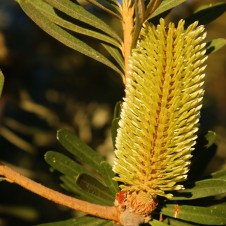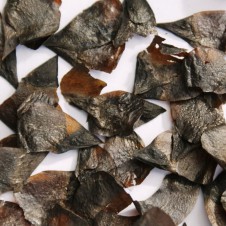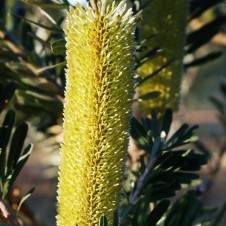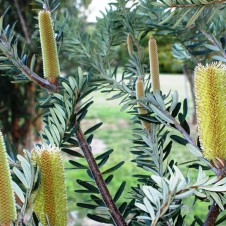General Description: This seed is from the tree form of Banksia marginata, it is a beautiful small tree, to 9 m tall, with large, dark green leaves and pale to bright yellow flowers massed in large, cylindrical spikes.
Flowers and Fruit: Hundreds massed together in dense, yellow, cylindrical spikes, from 5 to 15 cm long. Plants flower though summer and autumn and into winter. Flowers from January to July. Cones are grey and covered with the short remains of the flowers. The valves open when mature, usually in late summer.
Site Preference and Tolerances: Will grow on a variety of soils including sandy loam, clay loam, shale, peaty loam, volcanic and rocky soils such as sandstone, quartzite, granite and limestone. Frost and fire resistant and fast growing compared to other banksias. Tolerant of some short term waterlogging and will grow in heavy clay and moderately alkaline or sandy soils.
Life Span: Long-lived (80+ years).
Wildlife Value: Excellent for attracting birds of all types, these include honeyeaters that come for the copious nectar. Insects are also attracted to the nectar which in turn brings the smaller insect-eating birds. Seed-eaters such as parrots and cockatoos tear the cones apart and eat the seeds. This species is also a nectar source for wasps which parasitise leaf-eating scarab insects. Marsupials such as sugar gliders and pigmy possums are attracted to the nectar.
This species will help threatened woodland birds and fauna by providing a more diverse variety of foods over a longer period. A recent ‘state of Australian birds’ publication by Birds Australia said that the disproportional clearance of better quality land has meant that there are now less nectar resources for honeyeaters and insects during summer and autumn.
Other Values and Uses: These trees are bushyto a low level and make excellent wind-breaks they are also used for cut flowers and honey production. Aboriginal people soaked flowers in water to extract nectar and make a sweet drink.
Other Scientific Names: Banksia australis
Other Common Names: Honeysuckle, Warrock (Koorie name)
Germination Information: Usually grows well in one to two months without any treatment but a few things may help to increase the germination rate: 1. sowing in winter or early spring as higher temperatures may induce dormancy 2. Seed can be put between layers of moist sand and then put in a fridge for 8 weeks and then sown.




